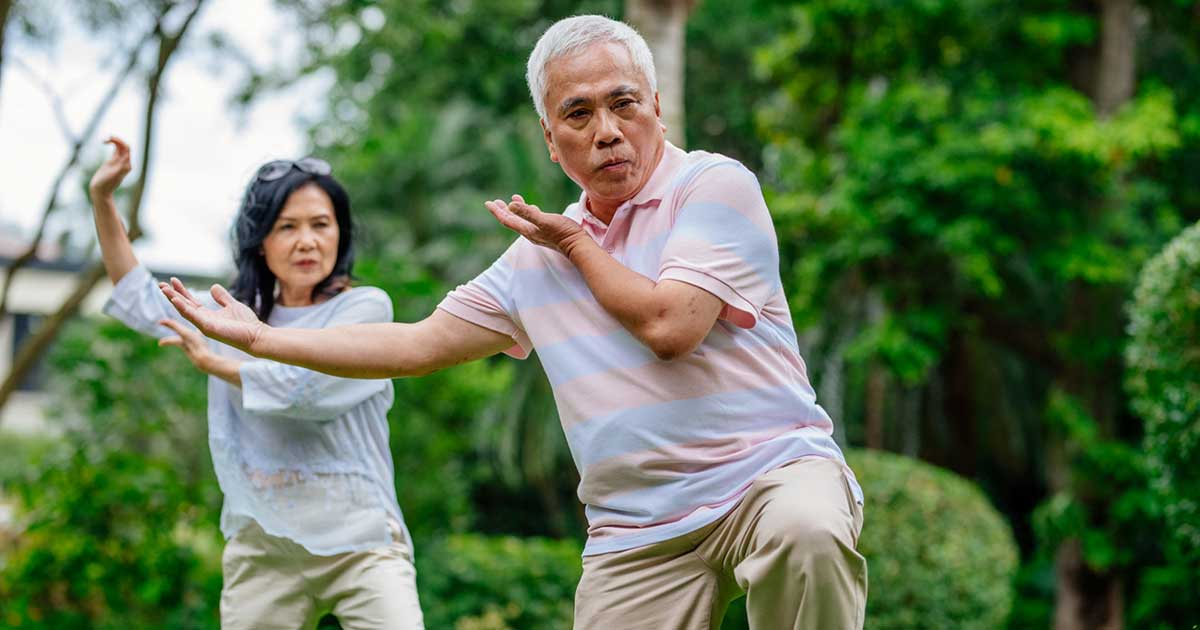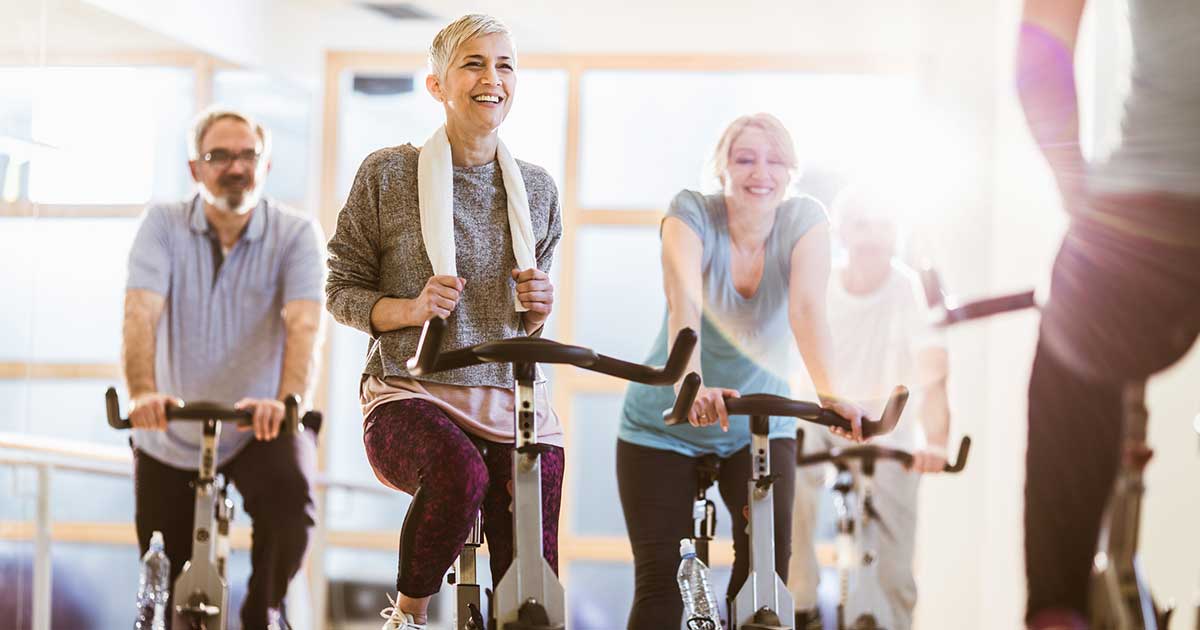The Best Balance Exercises to Do As You Age
Advice to improve your movement, fitness, and overall health from the world's #1 in orthopedics.
As we age, our bodies lose strength and flexibility. Not only do our muscles become weaker, but our senses also fade. The combination of weakness and lack of perception is a recipe for falling—a potentially serious problem that affects an estimated one in four US adults over age 65 each year, leading to 800,000 visits to the emergency room annually.

Research shows that older adults who are able to balance on one foot for at least 30 seconds are much less likely to experience a fall than those who cannot perform the action for that long. The World Health Organization recommends older adults perform activities that stimulate balance and mobility at least three days per week in order to reduce their risk of falling. And new scientific evidence suggests that the inability to stand on one leg for at least 10 seconds is strongly linked to the risk for premature death in adults over age 50.
Certain health conditions, such as arthritis in the knees and hips, can cause weakness that in turn leads to balance issues, says Aleksandra Kuta, PT, DPT, OCS, a physical therapist at HSS. People who undergo joint replacement surgeries also may experience a loss of balance because their new joints lack special cells, called proprioceptors, that help the brain determine where in space the limbs are at any given moment.
However, the brain can work around the loss of proprioceptors by using other senses, such as sight and touch. And although some age-related decline in balance is inevitable, most people can preserve—and even gain—balance with regular, targeted exercises.
How to Improve Your Balance
Physical balance comes in two forms: static and dynamic, Kuta says. Static balance describes the ability of the body to remain upright in a standing position, whereas dynamic balance refers to how well we move through space.
Although both forms of balance erode with age, some people experience the loss of one more strongly than the other, she says. For example, a person may have no difficulty standing still or reaching for something on a shelf above their head, but they may not be able to climb stairs or step off a curb without assistance.
Several group and individual activities are excellent for promoting balance, strength and mobility, Kuta says, including yoga, Tai Chi and Pilates. But you can see improvements in balance just by doing the simple exercises below. As with all physical exercise, the more you do, the better the expected outcome. Listen to your body. If you feel discomfort during the activity, don’t push it.
Single-Leg Balance
- Start with both feet on the floor. Raise one leg by pulling your knee toward your chest and stand on the other leg without holding on to a support.
- Keep your gaze in front of you and your back straight.
- Do at least 2 sets on each leg (ideally 3) every day for 30 seconds per stand. Even one set is helpful if you can’t manage more.
Tandem Stand
- Stand with your right leg forward, with your right heel touching your left toe.
- Hold the position for 30 seconds, then switch feet.
- Do 3 sets per leg at least once a day.
Walking in Tandem
This exercise adds a dynamic component to the tandem stand.
- Starting with your right leg, take 10 steps in a heel-to-toe stance, walking in a straight line and standing tall with your gaze up (as with a sobriety test).
- Switch to your left leg and repeat.
- Try to do this at 3 times per day if you can.
Standing March
- March in place without holding on to a support by raising your knees to hip height and alternating legs.
- Do this activity for 30 seconds 3 times a day.
If you feel unsteady on your feet while performing these exercises, hold on to a countertop or the back of a sturdy chair for support before eventually progressing to letting go of the support. And don’t be afraid to incorporate your balance-building activities into your daily life—while you’re brushing your teeth, for example—to form the habit.
If you struggle with balance and are afraid of falling, make an appointment with a physical therapist. They can give you exercises tailored to your specific needs.
Published 8/14/2023




